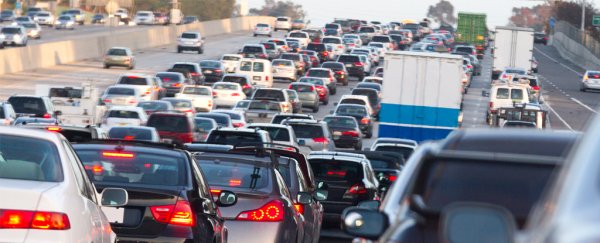The White House has approved a plan to freeze national fuel-efficiency standards for six years, which the administration projects will save Americans roughly US$2,000 on every new vehicle purchased and avoid 1,000 road deaths a year over the life of the program, according to two individuals briefed on the matter.
But auto safety analysts and environmental experts have questioned the assumptions used in deriving such figures.
The proposed rule and accompanying documentation, prepared by the National Highway Traffic Safety Administration and the Environmental Protection Agency and slated for release on Thursday, have been the subject of intense infighting within the Trump administration.
Acting EPA administrator Andrew Wheeler, who testified Wednesday before the Senate Environment and Public Works Committee, has privately questioned some of the plan's analyses and legal arguments but publicly defended the forthcoming proposal.
Despite the disagreements, the administration is moving forward with its efforts to ease fuel-efficiency standards on cars and light trucks through 2026 and to challenge the right of California and other states to set their own tailpipe standards, according to current and former government officials.
Two people who received the proposal approved by the White House Office of Management and Budget described key elements on the condition of anonymity because it has not been publicly released. The EPA and the Transportation Department did not respond to requests for comment.
The proposed rule rejects the approach the two agencies published less than two years ago during the Obama administration, which calculated that requiring higher fuel efficiency for cars and light trucks would save consumers money while also enhancing safety.
Instead, the federal government now will argue that freezing a fleetwide average of 35 miles per gallon in 2020 will save roughly 12,700 lives over the ensuing decades, partly because consumers will be more likely to purchase new cars rather than remaining in older, less safe vehicles.
Wheeler cited the potential for fewer traffic fatalities during his first appearance on Capitol Hill as acting EPA administrator.
But safety experts cautioned that there are numerous considerations that affect the nation's auto fleet and shape consumer purchasing decisions, including which cars and features motorists most want and when they decide to buy.
The White House's new analysis estimates that the Obama administration's previous rule would have increased the cost of vehicles an average of more than US$2,300, the individuals briefed on the matter said.
But a recurring question about the proposal, according to people familiar with it, is how costs from previous years' emissions standards are counted, which can shift the numbers significantly.
The proposal also calls for revoking California's right to set its own emission standards, which have been adopted in a dozen other states and the District of Columbia, on the grounds that only the Transportation Department can set fuel-economy standards.
California officials have vowed to wage a legal battle to retain the state's long-standing ability to seek waivers to require stricter fuel-efficiency standards. The government has granted 130 such waivers over the past five decades. None has been revoked.
Asked about the potential legal battle, Wheeler said at Wednesday's hearing that he would prefer a deal that avoids such a fight, though he acknowledged such a deal might not come.
"It's my goal - it's this administration's goal - to come up with a 50-state solution," Wheeler said.
But, he added, there are "important goals on highway safety, so we have to make sure those are met."
At the hearing, Sen. Thomas R. Carper (D-Del.) called the forthcoming proposal an "extreme" plan that would upend the auto industry and harm consumers.
"This administration has once again ignored common sense," Carper said.
Among the assumptions underpinning the proposal, according to the individuals who have seen the document, are that NHTSA projects that owners of more efficient vehicles would drive more overall because it would cost less to do so.
While the agency under the Obama administration assumed such a "rebound effect," the Trump administration assumes it will be twice as strong, which means more added driving in such cars and, as a consequence, more deaths.
This week, as the outlines of the proposal began to become clear, Thomas J. Pyle, president of the conservative Institute for Energy Research, told The Washington Post that the Trump administration "is doing the right thing" in scaling back the emissions targets the agencies set in 2012.
"The Obama administration promised a review of their unrealistic mandate but decided to lock it down after they didn't like the outcome of the last election," Pyle said.
"While we would prefer a full repeal of the [current standards], the Trump proposal is a reasonable first step."
But Martha Roberts, a senior lawyer at the Environmental Defense Fund, an advocacy group, called the government's past push for tighter fuel standards a "made-in-America success story" that helped reduce air pollution while saving people money at the gas pump.
If the administration goes ahead with its current plan, Roberts said, it will mean many people will ultimately pay more because of higher fuel bills for less fuel-efficient vehicles. "It's low-income, longer-commuting Americans that are particularly hit hard," she said.
Science AF is ScienceAlert's new editorial section where we explore society's most complex problems using science, sanity and humor.
2018 © The Washington Post
This article was originally published by The Washington Post.
